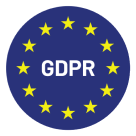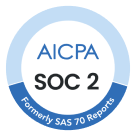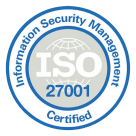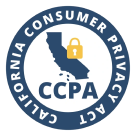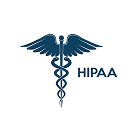
Your team sounds great on paper. But how do they actually sound on the phone?
Nearly 1 in 4 customers in the UK reported a poor service experience1 in 2024 — the worst satisfaction levels in a decade. It’s not just a bad day for customer support; it’s a sign that too many teams are flying blind.
Quality assurance call monitoring pulls back the curtain. It lets you hear what customers hear — the hesitation, the missed upsell, the perfect pitch. It turns conversations into coaching moments and performance reviews into real improvement.
In 2025, when every interaction is a brand-defining moment, QA is essential. And when done right, it doesn’t just fix issues. It prevents them.
This guide walks through how to build a scalable QA program — and how tools that make the process faster, smarter, and far more impactful.
Key Takeaways:
- Effective QA depends on collaboration across roles — from quality assurance agents to execs — to turn data into results.
- A structured QA framework ensures consistent evaluations and actionable feedback across your call center team.
- Real-time tools like call whispering and barging turn coaching into in-the-moment improvement, not delayed corrections.
- Scorecards and calibration sessions eliminate bias and keep your QA process fair, focused, and aligned across reviewers.
- Automation through call quality monitoring software surfaces insights faster, letting teams focus on coaching instead of manual reviews.
Try CloudTalk Free for 14 Days – No Credit Card Required
What Is Quality Assurance Monitoring in a Call Center?
Quality assurance monitoring in a call center is the process of reviewing customer interactions — typically calls — to make sure agents are hitting the mark. That means checking for tone, accuracy, professionalism, and whether the rep followed internal protocols or missed a key moment to help or upsell.
Done right, QA helps teams catch bad habits early, coach more effectively, and deliver a consistently better customer experience. It’s how managers stop flying blind — and how agents get feedback that actually helps them improve, not just tick boxes.
In a modern QA program, call scoring is just one piece of the puzzle. It’s a complete system — combining call recordings, scorecards, real-time dashboards, and coaching tools — all working together to ensure consistent quality. If you’re still using outdated or manual workflows, switching to a best-practice call center monitoring setup can significantly boost your team’s performance.
Difference Between Quality Control (QC) and Quality Assurance (QA)
Quality assurance is proactive, focusing on preventing mistakes by setting up the right systems, training, and monitoring processes. Quality control is reactive, checking the end result to catch errors that slipped through.
In a call center, QA might involve reviewing calls weekly to coach agents on tone and script adherence. QC, on the other hand, could mean flagging a call only after a customer complains.
Aspect
Quality Assurance (QA)
Quality Control (QC)
Focus
Preventing issues before they happen
Identifying and fixing issues after they occur
Approach
Process-oriented
Result-oriented
Timing
Ongoing during or immediately after the interaction
After the interaction or based on a triggered event
Example
Reviewing call recordings to coach agents on delivery
Investigating a call after receiving a customer complaint
Stop waiting for complaints to coach your team. Start QA that actually prevents problems.
8 Call Center Quality Monitoring Best Practices
A solid QA strategy isn’t just about listening to calls — it’s about listening with purpose. The best-performing teams treat monitoring as a system, not a checkbox. Below are eight practices that help call centers scale quality, sharpen coaching, and drive real performance improvements across the floor.
1. Build a QA Framework Like You’d Build a Flight Checklist
Pilots don’t wing it before takeoff — they follow a checklist. QA teams should do the same.
A proper QA framework gives reviewers a consistent way to assess agent performance, just like a preflight checklist ensures every system is ready. Without it, one manager might focus on tone while another obsesses over script accuracy, leading to scattered feedback and confused agents.
Design a scoring system that’s specific, repeatable, and actionable. Use a mix of quantitative metrics (like script adherence or resolution time) and qualitative ones (like empathy or clarity). The result? Everyone’s aligned on what “great” looks like — and how to get there.
2. Don’t Just Watch the Game — Watch the Whole Season
Reviewing a handful of calls each month is like scouting a player based on one highlight reel — impressive, but incomplete.
Instead, treat every customer interaction like a data point. Combine call recordings, transcriptions, live dashboards, and even post-call summaries to understand patterns, not just one-offs.
If you notice the same questions or objections popping up, that’s a trend worth coaching around — not just a bad day. Use tags, filters, or weekly review playlists to zoom in on what keeps happening, not what happened once.
3. Use Scorecards, Not Gut Feelings
Imagine a sports coach grading players based on “vibes” — no stats, no footage, just a feeling. That’s what QA looks like without scorecards.
A well-built QA scorecard breaks down each interaction into categories: greeting, tone, issue resolution, compliance, upsell opportunities, and more. Each gets a weighted score, so you’re not just giving feedback — you’re showing exactly where things went right or wrong.
Scorecards remove subjectivity, help you track agent growth over time, and make performance reviews data-backed instead of debate-fueled. Even better, when agents know the playbook, they start coaching themselves.
4. Think of Calibration as QA’s Quality Control
Here’s a twist: your QA team needs QA too.
Calibration sessions are like tuning instruments in an orchestra — they ensure everyone’s interpreting the same notes the same way. Bring reviewers together regularly to score the same call and compare results. Discuss discrepancies, align on expectations, and update your guidelines if needed.
Without calibration, one reviewer’s “7” might be another’s “9,” and feedback becomes inconsistent — which erodes trust. With it, your QA stays fair, focused, and far more effective.
5. Coach in Real Time, Not Just in Retrospect
Think of QA feedback like first aid — the sooner it’s applied, the more effective it is.
If a rep’s going off-script or showing signs of stress, you don’t need to wait until the monthly review. With live call whispering and barging tools, managers can jump in silently to guide the call or take over if needed.
Real-time coaching turns potential failures into saves — and turns training into momentum, not punishment. Jump into the call with whisper or barge-in features when an agent’s struggling, then follow up with clipped examples in a 1:1 so the feedback lands while it’s still fresh.
6. Let the Data Do the Heavy Lifting
Reviewing calls manually is like panning for gold with a spoon. You’ll find insights eventually — but it’s slow, inconsistent, and exhausting.
That’s where automation and AI tools make a difference. Features like sentiment analysis, transcript search, and trending topics surface what matters fast. Instead of combing through dozens of recordings, QA teams can spot red flags, keyword patterns, or emotional cues in seconds.
Let machines handle the mining — so your team can focus on the coaching.
7. Close the Feedback Loop
Feedback isn’t a memo — it’s a conversation.
Once QA reviews are complete, the real work starts: sharing insights with agents, asking for their perspective, and tracking whether the changes stick. The best teams treat QA like a coaching loop, not a one-way critique.
Use shared scorecards, 1:1 coaching sessions, and progress tracking to make sure your feedback isn’t just heard — it’s acted on. When agents feel part of the process, they buy in faster and improve faster.
8. Track the Right Metrics and Act on Them
Call quality without metrics is like a GPS without a destination. You’re collecting data, but where is it taking you?
The most effective QA programs tie reviews to actual KPIs: First Call Resolution, Customer Satisfaction, Average Handle Time, and QA scores over time. These metrics tell you if coaching is working, if training is sticking, and where the next bottlenecks are.
Use analytics not just to observe, but to steer. Platforms like CloudTalk pull these metrics into customizable dashboards, so managers can pivot in real-time instead of reacting two weeks too late.
S
What Are the Key Roles in Call Center Quality Monitoring?
Quality monitoring only works when the whole team is in sync. From frontline agents to executives, every role has a part to play — not just in collecting feedback, but in using it to drive actual change.
Managers: The Coaches in the Booth
Call center managers are the bridge between data and action. They listen, evaluate, and coach — using QA insights to shape behaviors, correct mistakes, and elevate performance.
Their toolkit includes live call monitoring, scorecards, coaching sessions, and dashboards that help them respond in real time and make strategic decisions across the team. Great managers don’t just point out what went wrong — they build systems to help it go right the next time.
Agents: The Voices Customers Actually Hear
Agents are the frontline performers — every word they say shapes the customer’s impression of the brand. But they’re also QA stakeholders. When monitoring is done well, agents see it as a mirror, not a microscope.
Top-performing teams involve agents in the QA process: reviewing their own calls, participating in calibrations, and setting personal improvement goals. It shifts the narrative from “you’re being watched” to “you’re being supported.”
Executives: The Architects of Accountability
QA insights don’t just live on the call floor. Executives use them to track performance trends, justify training investments, and link agent behavior to business outcomes like NPS or churn reduction.
Whether it’s approving new tools, pushing for tighter compliance, or investing in coaching programs, execs ensure that quality monitoring is resourced — and that it drives results across the business.
Don’t Let Coaching Fall Through the Cracks
You’ve got the calls. You’ve got the team. Now you just need the system that ties it all together.
Quality assurance call monitoring is how high-performing teams stay consistent — by turning raw conversations into clear, coachable insights.
CloudTalk makes it easier to track, score, and improve every call with tools built for modern QA: smart scorecards, live coaching features, and dashboards that actually surface what matters
Want to see how it works in your team?
Turn Every Call Into a Coaching Opportunity
Source:






